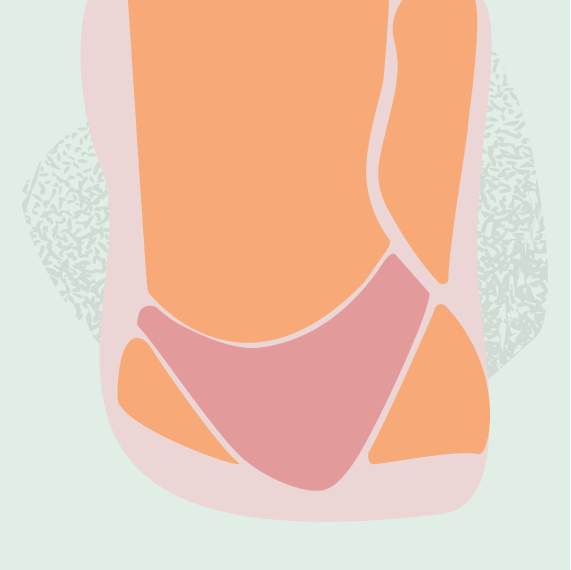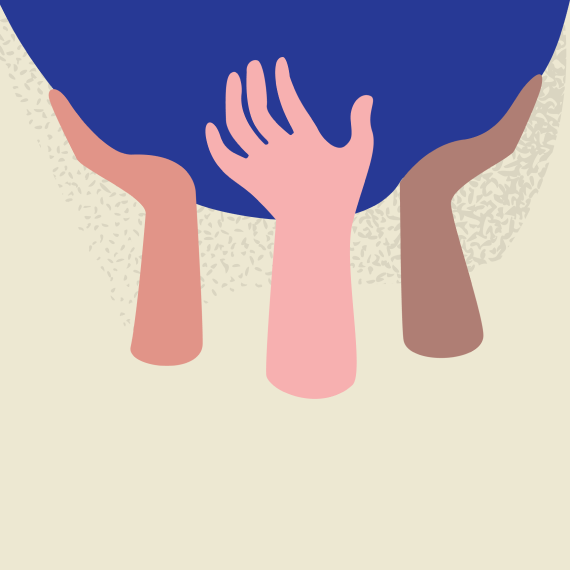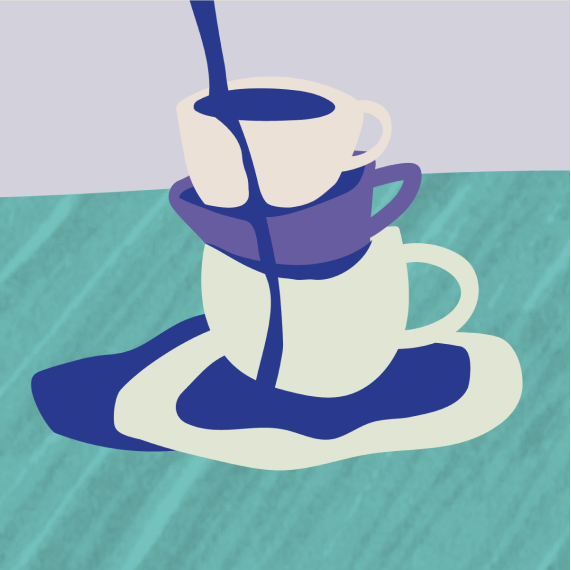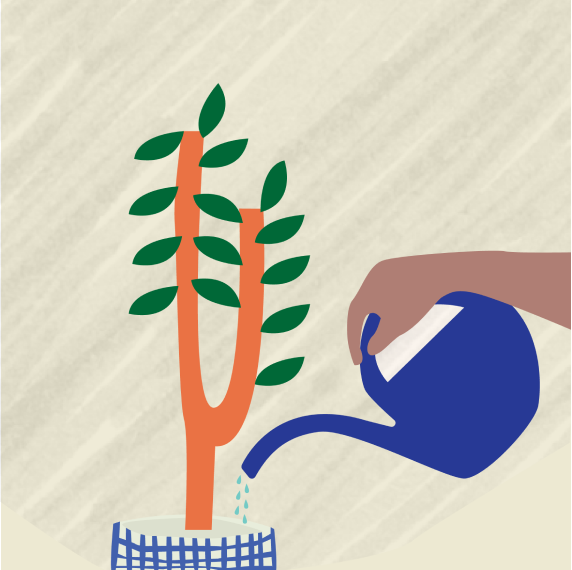
Pelvic Health 101
Everything you didn’t know about pelvic health — that you should.
Medically reviewed by

What is your pelvic floor?
If you ask anybody what they know about their pelvic floor, most people draw a blank. The bottom line is that your pelvic floor is kind of like a bowl or hammock for your organs. That sounds gross, but it’s actually an admirably complex system of muscles (45 muscles connect to your pelvis!) that cradles your insides every single time you breathe.
With that kind of high-pressure, ‘round-the-clock job, it’s no surprise that an estimated 24% of women have one or more pelvic floor disorders — or that this percentage increases to 50% as we age. Your pelvic floor includes a group of muscles, ligaments, and nerves at the bottom of your pelvis that serve three main functions:
Organ support
making sure the bottom doesn’t literally fall out of your body (but if you experience pelvic organ prolapse, you have options!)
Sexual appreciation
Self-explanatory and super important.
Waste elimination
(somebody’s gotta do it), controlling the closure and opening of your bowel and bladder.
The uterus, ovaries, fallopian tubes, cervix, vagina, rectum, bladder, and urethra all cohabitate with each other between your abdomen and legs, and look to your pelvic floor muscles for support. Think about it: this means your pelvis and all the parts it protects play a role in everything from fertility and childbirth, to being able to pee when your brain sends you the signal that it’s time to go.
What makes a pelvic floor “dysfunctional”?
Pelvic floor dysfunction is a catch-all term for a range of pelvic health conditions, but it’s medically defined as the inability to correctly tighten and relax the pelvic floor muscles for waste elimination. Usually, pelvic floor dysfunction is paired with one or more of the following symptoms:
Frequent and/or urgent need to pee
Bleeding between periods
Bladder leaks (when your coughs, jumps, and sneezes make you pee a little)
Constipation
Lower back pain
Incontinence (numbers one and two)
Prolapse
Hip pain

Navigating pelvic floor dysfunction can feel scary, isolating, and overwhelming. But it also means you get the opportunity to learn your body’s ins and outs better than most people will ever learn their own. No matter the cause of your leaks, there are treatments and solutions out there for you, and the first step is understanding the underlying cause.

Causes of Bladder Leaks
First, bladder leaks are way more common than most people are ready to admit. 1 in 3 women leaks, so none of us should feel shame talking about it — whether that convo starts with a close friend, a long look in the mirror, or a chat with a health professional. There isn’t a one-size-fits-all answer to *why* leaks happen, but there are a ton of factors that increase your odds, including specific life experiences:

Perimenopause and menopause
Your body naturally enters perimenopause when it starts producing less estrogen and progesterone — usually in your 40s. Perimenopause symptoms like hot flashes, lower sex drive, and vaginal dryness are actually what gives menopause such a bad rap, but bladder leaks are another super common symptom when your hormones start to shift. Even if you skate through perimenopause without experiencing leaks, when you officially enter menopause prolonged lower estrogen levels lead to weaker pelvic floor muscles, which explains why you might be caught off-guard by leaks when you laugh, jump, cough, sneeze, or even just stand up a little too fast.

Pregnancy and childbirth
When you’re pregnant, you have a 6-10lb weight sitting (sometimes thrashing) on top of your bladder, so kudos to you for literally any time you manage to have a dry day. Plus, during pregnancy your pelvic floor muscles and your entire musculoskeletal system can also get thrown out of whack—especially during the exertion of childbirth—which can lead to long-term leaking, and other forms of pelvic floor dysfunction.

Physical exertion
The clinical term for leaking when you exercise or exert your body in any way is stress incontinence. It’s usually a sign that your pelvic floor muscles (the levator ani muscles) are not as strong as they once were. Think of these muscles like flood gates that are only supposed to let out water (pee) when the water level is high enough. If the gates aren’t strong enough, they start opening and leaking even when the water level isn’t that high. With age, childbirth trauma, and other life events, they need to be strengthened — which is where Kegels and other pelvic floor exercises come into play.

Bladder leaks can also spring from having a surgery that affects your pelvic floor muscles (i.e. hysterectomy), or as an offshoot of an underlying health condition. That’s why it’s important to talk with a trusted health professional to figure out the best next steps for you and your body. In one way or another, the answer to why you’re leaking is tied up in the state of your pelvic floor, so it’s always a good idea to check up on it. If you have no idea how to do that, we’ve got you covered.

How to practice better pelvic floor health
Every body has its own little ecosystem, which means that protecting your health—and rehabilitating issues like pelvic floor dysfunction—requires a multifaceted approach. The more open you are to trying different healing techniques, including everything from pelvic floor muscle therapy to psychotherapy, the sooner you’ll find the treatment(s) that work best for you.

Breathing techniques
Getting in touch with your breath is the first and most accessible way to start paying attention to your pelvic floor. Since your pelvic muscles are directly affected by how you breathe, training your body to breathe fully (i.e. breathing from your diaphragm) will reduce pressure on your floor, better protecting it. Yoga, meditation, and other mindfulness practices can help you get started, but basically the idea is this: when you take a deep breath in, you should feel your belly expand out — that’s how you know you’re belly breathing correctly.

Exercises
There is a time and place for flexing your muscles with Kegels, but it's super important to do them correctly. Kegeling isn't only about building muscle strength — it's about teaching your muscles to contract *and* relax. The great news: it's totally true that you can do Kegels anytime, any place without needing to stop what you're already doing, or worrying about anyone noticing. A pelvic floor PT can also teach you to practice exercises to build a strong pelvic floor, including flexing, relaxing, and elongating your muscles.

Pelvic floor physical therapy
Finding a pelvic floor physical therapist is a crucial part of understanding and overcoming any form of pelvic floor dysfunction — and working with a pelvic floor PT can even help prevent pelvic floor issues from happening in the first place. For most people, working with a pelvic floor physical therapist involves retraining your levator ani muscles to flex, relax, and elongate in ways that support your body instead of interfering with your day-to-day. You can start your search for a pelvic floor physical therapist in your area here.

Eat mindfully
There are certain foods and drinks that are considered friendlier for your bladder and floor than others, but every body’s triggers are different (and not all triggers have to do with what you are or aren’t eating). Keeping a food and drink diary can help identify your triggers if you’re not yet sure what they are. Just keep a note of what you consume, and start keeping track of what is (and isn’t) making you book it to the bathroom.

Take care of your mental health
It’s the 21st century, so we’ll just come out and say that your mental state does affect your bodily health. If you’re someone who experiences anxiety about leaking, that stress can actually cause you to leak more. Speaking with a therapist and even something as simple as starting a new hobby can help regulate your stress level. No matter how you do it, being proactive about protecting your health—pelvic and otherwise—will help mediate everyday stress and anxiety.